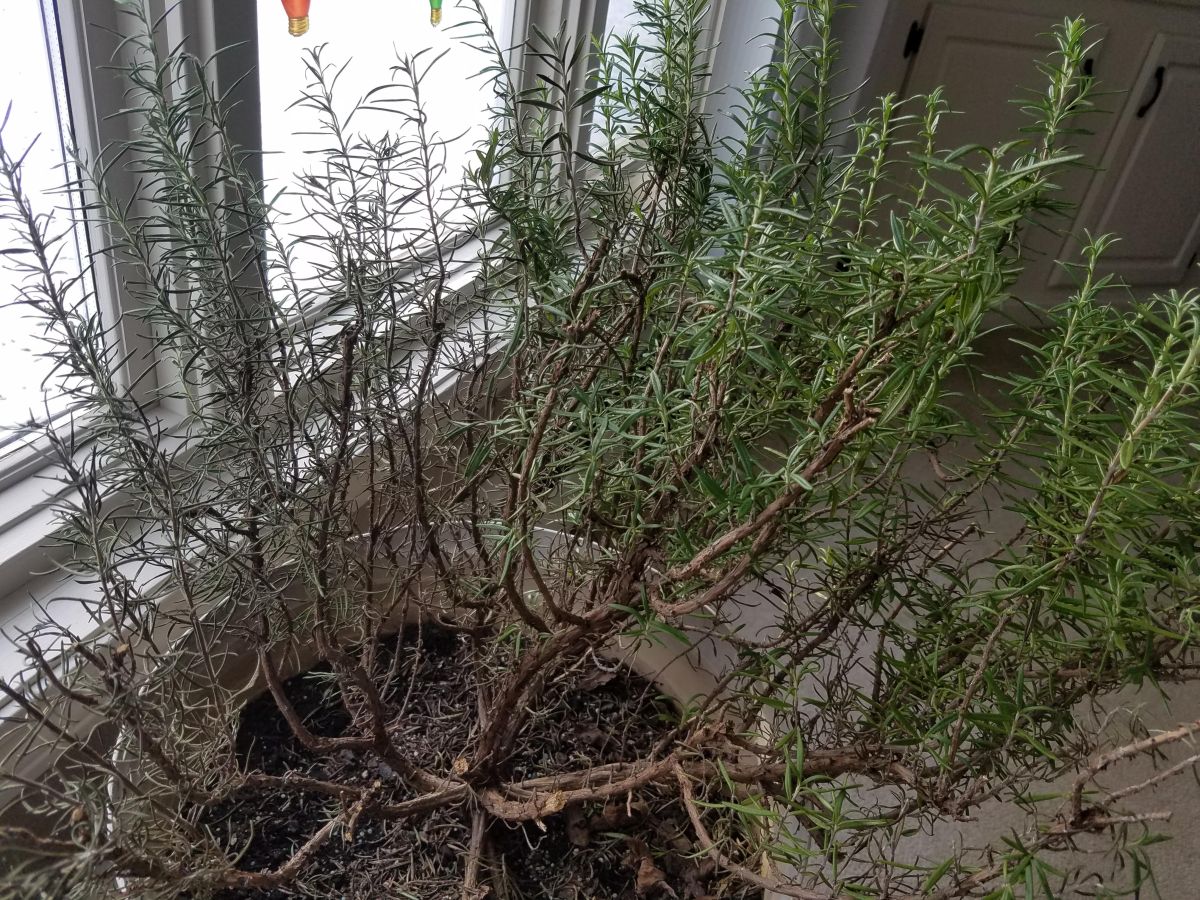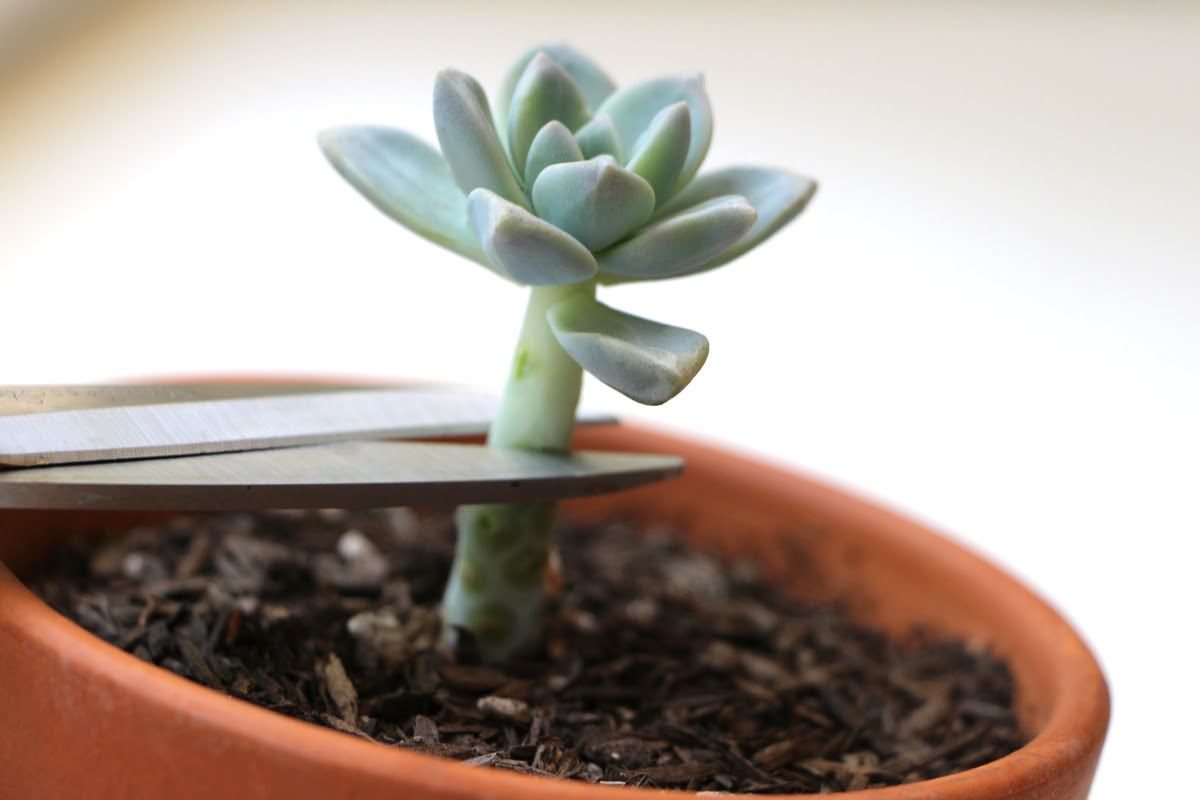Home>Gardening Tips and Tricks>Problem Solving>How To Revive Cut Sunflowers


Problem Solving
How To Revive Cut Sunflowers
Modified: January 22, 2024
Learn how to revive cut sunflowers with problem solving techniques. Keep your sunflowers fresh and vibrant for longer with these expert tips.
(Many of the links in this article redirect to a specific reviewed product. Your purchase of these products through affiliate links helps to generate commission for Chicagolandgardening.com, at no extra cost. Learn more)
Table of Contents
- Introduction
- Understanding the Lifespan of Sunflowers
- Assessing the Condition of Cut Sunflowers
- Reviving Wilting Sunflowers
- Refreshing Dehydrated Sunflowers
- Replenishing Sunflowers with Water
- Trimming Sunflower Stems
- Providing Proper Sunflower Nutrition
- Caring for Cut Sunflowers in a Vase
- Preventing Sunflower Decay and Disease
- Conclusion
Introduction
Sunflowers are bright, cheerful blooms that bring joy to any space. Whether you receive them as a gift or have picked them from your own garden, it’s disheartening to see these beautiful flowers wilt and lose their vitality over time. However, with a little knowledge and care, you can revive cut sunflowers and enjoy their vibrant beauty for longer.
In this article, we will explore the lifespan of sunflowers and how to assess the condition of cut sunflowers. We will also discuss various techniques to revive wilting sunflowers and refresh dehydrated blooms. Additionally, we will provide tips on proper water replenishment, stem trimming, and sunflower nutrition to ensure their longevity.
Furthermore, we will delve into the proper care for cut sunflowers in a vase, including techniques to prevent decay and disease. By following these guidelines, you can keep your sunflowers fresh and vibrant, allowing you to revel in their beauty for an extended period.
So, if you’re ready to learn how to revive cut sunflowers and make the most of these stunning blooms, let’s dive into the details and discover the secrets to preserving sunflower magnificence!
Understanding the Lifespan of Sunflowers
Before we delve into the techniques for reviving cut sunflowers, it’s essential to understand their natural lifespan. Sunflowers typically have a relatively short life cycle, even when properly cared for. On average, cut sunflowers can last anywhere from 5 to 12 days, depending on various factors such as the freshness of the blooms, growing conditions, and post-harvest care.
The prime flowering stage of a sunflower is when the petals are fully open, revealing the captivating center, also known as the disc. The disc is composed of tiny individual flowers that mature into the seeds we associate with sunflower seeds.
As sunflowers age, the petals will gradually wilt and start to turn brown or fall off. This natural process is a result of the flower’s lifecycle coming to an end. It’s important to note that not all sunflowers will follow the same timeline, and various factors can influence their lifespan.
Some key factors that can affect the lifespan of cut sunflowers include:
- The freshness of the blooms at the time of cutting.
- The environment in which the sunflowers were grown.
- The amount and quality of care given to the flowers after cutting.
- The availability of proper nutrition and hydration.
- The presence of any diseases or pests that may accelerate the wilting process.
Understanding these factors helps us realize that while we may not be able to extend the lifespan of cut sunflowers indefinitely, we can certainly take steps to increase their longevity and make the most of their beauty. By implementing the right techniques and providing optimal care, it is possible to revive wilting or dehydrated sunflowers and enjoy their vibrant presence for longer.
Assessing the Condition of Cut Sunflowers
Before attempting to revive cut sunflowers, it’s essential to assess their current condition. This step will help you determine the level of care and specific techniques needed to bring them back to life. Here’s how you can assess the condition of your cut sunflowers:
1. Check for Wilting
Observe the overall appearance of the sunflower blooms. Are the petals drooping, sagging, or withering? Wilting is a common sign of dehydration and can indicate that the flowers are not receiving enough water.
2. Examine the Stem
Inspect the stem of each sunflower. Is it firm and sturdy, or does it feel mushy or slimy? A mushy stem may indicate bacterial or fungal decay, which can contribute to the wilting of the flowers.
3. Look for Discoloration
Take note of any unusual discoloration in the petals or leaves. Dark spots, brownish patches, or yellowing can be signs of rotting or disease.
4. Assess Petal Brightness
Consider the vibrancy of the sunflower petals. Faded or dull colors may indicate that the flowers are past their prime and are approaching the end of their natural lifespan.
5. Smell for Off Odors
Take a moment to smell the sunflowers. Do they emit a foul odor? Unpleasant smells can be a sign of bacterial growth and decay.
By evaluating these factors, you can gain a clear understanding of the current condition of your cut sunflowers. This assessment will guide you in choosing the most appropriate techniques to revive and rejuvenate these blooms.
Reviving Wilting Sunflowers
It can be disheartening to see your sunflowers wilting, but fear not, as there are steps you can take to revive them and bring back their vitality. Here’s how you can revive wilting sunflowers:
1. Watering
The first and most crucial step is to provide your wilting sunflowers with an adequate water supply. Place the sunflowers in a vase filled with fresh, lukewarm water. Make sure to submerge the stems completely to allow for optimal hydration. Change the water every 2 to 3 days to prevent bacterial growth.
2. Rehydration Soak
If the sunflowers are severely wilted, you can perform a rehydration soak. Trim the ends of the stems at an angle and gently submerge the entire stem in a bucket of room-temperature water. Allow the sunflowers to soak for 1 to 2 hours, allowing them to absorb water through the stems and rejuvenate.
3. Floral Preservative
Adding a floral preservative to the water can help extend the lifespan of wilting sunflowers. Floral preservatives contain nutrients and biocides that nourish the flowers and prevent the growth of bacteria. You can find pre-made floral preservatives at the florist or create your own by mixing water, sugar, and bleach.
4. Supporting Stems
If the sunflower stems are weak and unable to support the blooms, you can use floral wire or tape to gently secure the stems together. This will provide additional stability and ensure the flowers stand tall and proud.
5. Mist Spraying
Lightly misting the petals and leaves of wilting sunflowers can help hydrate them and improve their appearance. Use a spray bottle filled with clean water and mist the flowers from a distance, being careful not to saturate them.
By following these techniques, you can effectively revive wilting sunflowers and bring back their vibrant beauty. Remember to monitor the progress of your sunflowers and make adjustments to the care routine as needed.
Refreshing Dehydrated Sunflowers
Dehydration is a common issue that can cause sunflowers to lose their charm and vitality. However, with proper care and attention, you can refresh dehydrated sunflowers and bring them back to life. Here’s how:
1. Rehydrating Soak
If your sunflowers appear dehydrated and wilted, a rehydrating soak can work wonders. Trim the ends of the sunflower stems at an angle and submerge them in a bucket of room-temperature water. Allow the sunflowers to soak for several hours, or even overnight, giving them enough time to absorb the water and regain their moisture.
2. Reviving Solution
You can create a homemade reviving solution to help replenish the sunflowers. Mix together equal parts water and lemon-lime soda, which contains sugar to provide nourishment, and the carbonation can help perk up the blooms. Use this solution instead of regular water when hydrating the sunflowers in a vase.
3. Floral Food
Using a commercial floral food can be beneficial in rejuvenating dehydrated sunflowers. These products contain a blend of nutrients, sugars, and biocides that promote hydration and help extend the life of the blooms. Follow the instructions on the floral food packet and add it to the water in your vase.
4. Humidity Enhancement
Dehydrated sunflowers benefit from increased humidity levels. You can place a tray filled with water near the sunflowers or use a humidifier in the room to create a more humid environment. This added moisture can help prevent further dehydration and promote vitality.
5. Avoiding Direct Sunlight
While sunflowers love sunlight, dehydrated blooms may not tolerate direct sunlight well. Keep them in a location away from intense sunlight to prevent further drying out. Opt for a spot with indirect sunlight or a slightly shaded area.
By following these techniques, you can refresh dehydrated sunflowers and restore their beauty and vibrancy. Remember to monitor their progress and make any necessary adjustments to ensure they continue to stay hydrated and rejuvenated.
Replenishing Sunflowers with Water
Water is essential for the survival and longevity of cut sunflowers. Properly replenishing them with water is crucial to maintain their freshness and vitality. Here are some key tips to ensure your sunflowers receive an adequate water supply:
1. Clean Water
Start by using clean, preferably filtered, water to ensure that no impurities or chemicals harm the sunflowers. Avoid using fluoridated or chlorinated water, as these can be detrimental to the flowers’ health.
2. Lukewarm Temperature
Fill a vase with lukewarm water, as sunflowers absorb warm water more easily than cold water. This helps to prevent shock to the stems and encourages the flowers to drink the water more effectively.
3. Submerged Stems
Trim the ends of the sunflower stems at a 45-degree angle to facilitate proper water absorption. Make sure to submerge the stems fully into the water to provide maximum hydration. Check the water level daily and replenish as needed to keep the stems immersed.
4. Changing Water Regularly
Change the water in the vase every 2 to 3 days, or sooner if it becomes cloudy or discolored. This helps maintain cleanliness and prevents the growth of bacteria, which can cause the sunflowers to decay quickly.
5. Hydration Routine
During particularly hot or dry weather, consider misting the leaves and petals of the sunflowers with water to provide additional hydration. This can help keep the flowers refreshed and prevent them from drying out.
6. Flower Tubes or Floral Foam
Alternatively, you can use flower tubes or floral foam to secure the sunflower stems and provide a continuous water supply. These containers hold water and keep the stems hydrated, ensuring that the sunflowers receive the necessary moisture to stay fresh.
By following these steps and providing proper hydration, you can effectively replenish your sunflowers with water and extend their lifespan. Regular monitoring and maintenance of the water supply will go a long way in keeping your sunflowers vibrant and thriving.
Trimming Sunflower Stems
Properly trimming the stems of sunflowers is an essential step in maintaining their health and prolonging their lifespan. Here are some important tips for trimming sunflower stems:
1. Use Clean Tools
Before trimming, ensure that your tools are clean and sanitized. Use sharp pruning shears or a clean pair of scissors to make a clean and precise cut. This helps prevent damage to the stems and allows for better water absorption.
2. Angle of the Cut
When trimming the sunflower stems, make the cut at a 45-degree angle. This increases the surface area available for water absorption and reduces the chances of the stems sitting flat on the bottom of the vase, which can hinder water intake.
3. Length of the Cut
Take a careful look at the stem length and the size of your vase. Trim the stems accordingly to fit the vase while ensuring that a sufficient length remains for water absorption. Trim off any damaged or discolored parts of the stems to promote overall health.
4. Remove Excess Foliage
Remove any excess foliage or leaves from the lower portion of the sunflower stems. These lower leaves can become submerged in water and promote bacterial growth, leading to quicker wilting. By removing them, you help maintain water cleanliness and prevent decay.
5. Prune Below Node Joints
When trimming sunflower stems, make the cut just below a node joint. A node is a point where the leaves branch off from the stem. Cutting just below these joints encourages new growth and prevents the stems from splitting or becoming weak.
6. Repeat Trimming
As sunflowers continue to grow and age, their stems may become clogged or develop an airlock. To prevent this, it’s recommended to re-trim the stems every few days. This removes any blockages and allows for better water uptake, ultimately prolonging the life of the sunflowers.
By following these tips, you can ensure that your sunflowers have properly trimmed stems, enabling them to efficiently absorb water and nutrients. Regular trimming helps maintain the overall health and vitality of the flowers, allowing you to enjoy their bright beauty for a longer duration.
Providing Proper Sunflower Nutrition
Just like any other living organism, sunflowers require proper nutrition to stay healthy and vibrant. By providing the right nutrients, you can significantly enhance the longevity and vitality of these beautiful blooms. Here are some essential tips for providing proper sunflower nutrition:
1. Flower Food or Plant Fertilizer
One of the easiest ways to provide sunflowers with essential nutrients is by using a flower food or plant fertilizer. These products contain a balanced mix of nutrients, including nitrogen, phosphorus, and potassium (NPK), which are vital for promoting healthy growth and vibrant blooms. Follow the manufacturer’s instructions when adding the flower food to your vase or watering solution.
2. Homemade Plant Food
If you prefer natural alternatives, you can create your own homemade plant food using household items. For example, you can mix a small amount of Epsom salt into the water to provide magnesium, which helps with chlorophyll production and overall plant health. Additionally, you may create compost tea by steeping compost in water and using it to water your sunflowers.
3. Nutrient-Rich Soil
If you are growing sunflowers in the garden, make sure to provide them with nutrient-rich soil. Before planting, mix organic matter such as compost or well-rotted manure into the soil. This enhances its fertility and supplies the necessary nutrients for the sunflowers to thrive.
4. Mulching
Applying a layer of organic mulch around the base of your sunflowers can help retain moisture in the soil and provide a slow release of nutrients. Use materials like straw, wood chips, or leaves as mulch, ensuring that it is spread evenly and not touching the stem. Mulching also helps prevent weed growth, which can compete with sunflowers for nutrients.
5. Correct Watering
Proper watering plays a crucial role in providing sunflowers with nutrition. Overwatering can leach away essential nutrients, while underwatering can lead to nutrient deficiencies. Maintain a consistent watering schedule, ensuring that the soil remains evenly moist but not waterlogged. Adjust watering based on weather conditions, as sunflowers may require more hydration during hot and dry periods.
6. Timely Deadheading
Deadheading, or the removal of wilted or spent flowers, is not only aesthetically pleasing but also helps redirect energy and nutrients to the new blooms. Regularly inspect your sunflowers and promptly remove any fading or withering flowers to stimulate continuous growth and ensure that nutrients are efficiently utilized.
By implementing these strategies, you can provide your sunflowers with the proper nutrition they need to thrive. Remember, healthy and well-nourished sunflowers not only have longer lifespans but also produce more vibrant and eye-catching blooms.
Caring for Cut Sunflowers in a Vase
When it comes to keeping cut sunflowers fresh and vibrant, proper care in a vase is essential. By following some simple guidelines, you can extend the lifespan of your sunflowers and enjoy their stunning beauty for longer. Here are the key steps to effectively care for cut sunflowers in a vase:
1. Clean Vase and Water
Start by thoroughly cleaning the vase with warm, soapy water to remove any bacteria or residue. Rinse it well before filling it with fresh, lukewarm water. Cleaning the vase helps prevent the growth of harmful microorganisms that can accelerate the wilting process.
2. Remove Excess Foliage
Remove any foliage or leaves from the lower portion of the sunflower stems that would end up submerged in water. This prevents the foliage from decaying and promotes water cleanliness. Only leaves or foliage that will remain above the water level should be left intact.
3. Trim Stems and Change Water
Trim the ends of the sunflower stems at a 45-degree angle just before placing them in the vase. This fresh cut allows for better water absorption. Additionally, change the water in the vase every two to three days, or when it becomes cloudy, to maintain the water freshness and prevent bacterial growth.
4. Display in a Cool Spot
Place the vase of sunflowers in a cool area of your home, away from direct sunlight, heat sources, and drafts. Direct sunlight can cause the flowers to wilt more quickly, while heat and drafts can dehydrate them. Cooler temperatures help prolong the freshness and lifespan of the sunflowers.
5. Avoid Fruit and Ethylene Exposure
Avoid placing sunflowers near ripening fruits, such as bananas or apples, as they release ethylene gas, which speeds up the aging process of the flowers. Separating sunflowers from ethylene-emitting fruits helps maintain their freshness and prevents premature wilting.
6. Enjoyment and Observation
Take the time to enjoy the beauty of your cut sunflowers and observe their condition. Monitor the water level, the appearance of the flowers, and the overall health of the stems. Remove any wilted or decaying flowers promptly to promote the longevity of the remaining blooms.
By following these care instructions, you can ensure that your cut sunflowers remain vibrant and beautiful in the vase. With a little attention and care, you can enjoy their radiant presence for days and even weeks to come.
Preventing Sunflower Decay and Disease
Like any other plants, sunflowers are susceptible to decay and disease, which can greatly affect their health and lifespan. However, by implementing preventive measures, you can minimize the risk of these issues and keep your sunflowers looking fresh and vibrant. Here are some key steps to prevent sunflower decay and disease:
1. Cleanliness and Sterilization
It’s important to maintain cleanliness in all aspects of sunflower care. Start by using clean and sanitized tools when handling sunflowers, such as scissors or pruning shears for trimming stems. Cleaning the vase regularly and changing the water frequently also helps prevent the growth of harmful bacteria that can lead to decay.
2. Proper Watering and Hydration
Watering sunflowers properly is crucial to prevent both dehydration and overhydration. Ensure that the sunflowers receive sufficient water to hydrate their stems and petals but avoid waterlogging, as this can lead to stem rot. Provide water at room temperature and avoid cold or chlorinated water, which can shock or harm the flowers.
3. Adequate Air Circulation
Poor air circulation can contribute to the development of fungal diseases in sunflowers. Avoid overcrowding sunflowers in a vase or garden bed to allow for proper airflow around the plants. This helps prevent the buildup of moisture, which can lead to mold or fungus growth.
4. Disease Resistant Varieties
When selecting sunflower varieties, consider choosing disease-resistant varieties if available. These varieties are specifically bred to be more tolerant and resistant to common diseases that affect sunflowers, reducing the risk of infection.
5. Balanced Plant Nutrition
Providing sunflowers with proper nutrition helps strengthen their immune system and makes them more resilient against diseases. Ensure that the sunflowers receive a balanced and adequate supply of nutrients, including nitrogen, phosphorus, and potassium. This can be achieved through the use of fertilizers or organic compost.
6. Regular Inspections
Regularly inspect your sunflowers for any signs of decay or disease. Look for wilting, brown spots, mold, or any other abnormalities. Promptly remove any affected flowers, leaves, or stems to prevent the spread of disease to neighboring plant parts.
By following these preventative measures, you can significantly reduce the risk of sunflower decay and disease. With proper care and attention, you can ensure that your sunflowers stay healthy, vibrant, and free from potential ailments.
Conclusion
Sunflowers are undeniably beautiful and bring joy to any space, whether in a vase or growing in a garden. With proper care and attention, you can extend the lifespan of cut sunflowers and keep them looking vibrant and fresh for longer periods. By understanding the natural lifespan of sunflowers, assessing the condition of cut blooms, and implementing specific techniques, you can revive wilting or dehydrated sunflowers and bring them back to their full glory.
Providing proper sunflower nutrition, including water replenishment and balanced nutrients, is essential to support their growth and maintain their overall health. Trimming sunflower stems, caring for them in a vase, and preventing decay and disease are further steps you can take to ensure their longevity and beauty.
Remember to assess the condition of your sunflowers regularly, make necessary adjustments to their care, and remove any fading or decaying flowers promptly to foster the growth of new blooms. By following these guidelines, you can enjoy the vibrant presence of sunflowers in your home or garden for an extended period.
So, whether you’re gifting sunflowers to a loved one or growing them for your own enjoyment, be sure to utilize these tips to give them the love and care they deserve. With the right techniques and proper care, you can make the most of these stunning flowers and savor their beauty for as long as possible.








